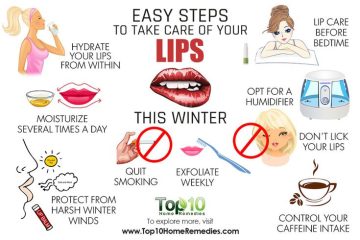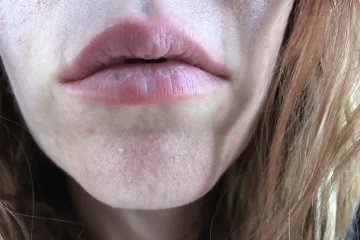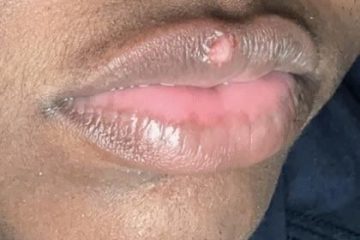To remove upper lip hair, consider depilatory creams, waxing, threading, or laser treatment. Choose a method that suits your skin type and hair growth pattern.
Removing upper lip hair has become a common part of many beauty routines. It’s important to select the method that aligns best with your skincare goals and pain threshold. Depilatory creams offer a quick, painless option, but they may not be suitable for sensitive skin.
Waxing and threading provide longer-lasting results, with threading being a gentler approach for delicate skin areas. For a more permanent solution, laser hair removal targets hair follicles, reducing hair growth over time, albeit with a higher cost and the need for multiple sessions. Always perform a patch test or consult a professional when trying a new hair removal method to ensure it agrees with your skin.
Overview Of Upper Lip Hair Removal
Welcome to the ultimate guide for achieving that flawless upper lip. Many wrestle with the unwanted garden of hairs above their smile. Fear not! This article unveils various safe and effective methods to banish those pesky follicles.
The Quest For Smooth Skin
Smooth skin ranks high on the beauty wishlist. It’s a sign of youthfulness and care. But upper lip hair often stands in the way. The good news? Several gentle solutions exist to help you conquer this challenge.
Upper Lip Hair: A Common Concern
Upper lip hair is a universal challenge. It affects individuals across various age groups and backgrounds. The degree and visibility of this hair vary, but the desire for a hair-free upper lip is common. Be it for cosmetic reasons or personal preference, the goal is the same — a smooth, clean look.
Different Hair Types And Growth Patterns
Removing upper lip hair is a common skin care routine for many people.
As easy as it may sound, it involves understanding the type of hair and its growth patterns.
Everyone’s hair is different. Some have coarse, dark hair, while others have fine, light hair.
Identify your type, and tackle hair removal smartly.
Identifying Your Hair Type
Before you choose a hair removal method, know your hair. Thin, fine hair reacts differently to treatments than thick, coarse hair.
- Thin Hair: Generally easier to remove and less visible.
- Thick Hair: Often requires stronger removal methods.
- Coarse Hair: May cause more discomfort during removal.
Understanding Growth Cycles
Hair doesn’t grow at the same rate. It has a life cycle. The anagen phase is when hair actively grows. The catagen phase is a transitional stage. And the telogen phase is when hair sheds.
| Phase | Duration | Details |
|---|---|---|
| Anagen | 2-7 years | Active growth phase |
| Catagen | 2-3 weeks | Transition phase |
| Telogen | 3 months | Resting phase before hair falls out |
Note the timing, as it’s key for effective hair removal.
Common Methods For Upper Lip Hair Removal
Upper lip hair removal is a common practice for many seeking smooth, clear skin. Choosing the right method is crucial and depends on one’s preferences, pain tolerance, and budget. Both temporary and permanent solutions exist, with various pros and cons.
Temporary Solutions
Temporary methods offer quick fixes that are cost-effective. They are ideal for those testing out options or needing a swift solution.
- Shaving: Quick and pain-free but requires frequent upkeep.
- Depilatory Creams: Work by dissolving hair; suited for those avoiding pain.
- Waxing: Provides a longer-lasting smoothness, but may cause discomfort.
- Threading: Great for precision, involves twisting thread to pull out hair.
- Tweezing: Perfect for stray hairs, involves plucking each hair individually.
Permanent Techniques
For those seeking a lasting solution, permanent techniques reduce hair growth over time.
| Method | Description | Duration |
|---|---|---|
| Laser Hair Removal | Uses laser to target hair follicles, inhibiting growth. | Several sessions needed |
| Electrolysis | Destroys hair growth with electrical currents. | Multiple appointments needed |
Pros And Cons Of Popular Removal Techniques
Everyone has unique preferences for removing upper lip hair. Some methods are quick and easy, while others last longer. This section looks at the pros and cons of the most popular upper lip hair removal methods.
Shaving And Depilatory Creams
Shaving is an affordable option that you can do at home. It’s painless and fast, but the hair grows back quickly, often feeling stubbly.
Depilatory creams dissolve hair at the surface. They’re easy to use but can cause skin irritation or allergic reactions for some people. Make sure to do a patch test first.
Waxing And Threading
Waxing pulls hair from the root. It gives a smooth finish that lasts weeks. The downsides include pain and potential skin irritation.
- Lasts 3-6 weeks
- Can be done at home or in a salon
- Might cause redness or bumps
Threading is an ancient technique requiring skill. It’s precise and good for sensitive skin. However, it may be uncomfortable and not widely available.
- Provides precise shaping
- Minimal contact with the skin
- Can be painful and take time
Laser Hair Removal
| Pros | Cons |
|---|---|
| Long-term results | Costly |
| Less hair growth over time | Multiple sessions needed |
| May be less painful than waxing | Risk of burns or pigmentation |
Laser hair removal targets the hair follicle, reducing hair growth over time. It’s effective for many, but it works best on people with dark hair and light skin.
Do-it-yourself: Home Remedies
Tackling upper lip hair can be a sensitive issue. Many look for gentle, natural solutions. This section of our skincare guide dives into home remedies you can whip up for hair removal. Try them at home with ease and comfort.
Natural Concoctions
Natural remedies offer a kinder approach to your skin. Items from your pantry can be your allies. Below are effective, natural mixes to try:
- Sugar and Lemon: Mix 2 tablespoons of sugar, 2 teaspoons of lemon juice, and 10 tablespoons of water. Apply to your upper lip, let it dry, and peel off.
- Egg White Mask: Combine 1 egg white with some cornflour and sugar. Apply and pull off once it’s set.
- Turmeric and Milk: Create a paste with turmeric powder and milk. Apply, let it dry, and rub it off gently.
Over-the-counter Products
If mixing and blending isn’t for you, over-the-counter options exist. These products are designed for sensitive areas like the upper lip. Always conduct a patch test to avoid any adverse reactions:
- Hair Removal Creams: Select creams made for facial use. Follow instructions to avoid skin irritation.
- Wax Strips: Buy strips designed for the face. Press on and pull off in a swift movement.
- Facial Epilators: These small, handheld devices can pluck hairs from the root. Use cautiously to prevent discomfort.

Credit: www.pinterest.com
Pre And Post Hair Removal Skin Care
Unwanted upper lip hair can be a concern for many, but with the right skin care routine, removing it becomes easier and safer. Caring for your skin before and after hair removal is crucial. It helps to protect and heal your delicate upper lip area.
Preparing Your Skin
Clean and exfoliate your skin to remove dirt, oil, and dead cells. This ensures the hair removal process is effective and gentle. Use a mild cleanser and a soft exfoliating scrub suited for your skin type.
Steps for skin preparation include:
- Gentle cleansing: Use a soft, non-abrasive cleanser to avoid irritation.
- Light exfoliation: A mild scrub can help prevent ingrown hairs.
- Steam: Gently steam your face to open pores and ease hair removal.
- Pat Dry: Carefully dry your skin with a soft towel.
- Apply a pre-treatment oil or lotion: Especially designed for hair removal, to protect the skin.
Soothing Post-treatment Care
After hair removal, the skin tends to be sensitive and can often show signs of redness or irritation. A calming skincare routine can help restore your skin’s balance.
Essential steps for after-care include:
- Cooling: Apply cold compresses to reduce swelling and soothe the skin.
- Hydration: Use a moisturizer that suits your skin to keep it soft and hydrated.
- Avoid makeup: Keep makeup off the area for at least a few hours to prevent clogging of pores.
- Use a healing ointment: Aloe vera or an antibacterial cream can aid in healing.
- Sun protection: Apply a broad-spectrum sunscreen to shield sensitive skin from harmful UV rays.
Sensitive Skin Considerations
Got sensitive skin? Removing upper lip hair needs extra thought. The wrong choice can lead to irritation or rashes. Let’s explore safe options for tender skin.
Choosing The Right Method
Sensitive skin demands gentle methods. Here are top picks:
- Threading: A skilled technique minimizing skin contact.
- Sugaring: Natural and less harsh than waxing.
- Hair removal creams: Choose products designed for sensitive skin.
- Laser hair removal: Professional treatment, effective but pricy.
Remember to patch test before a full application.
Allergic Reactions And How To Avoid Them
Allergies are no fun. Keep them at bay:
- Read labels for known allergens.
- Opt for fragrance-free and hypoallergic products.
- Consult a dermatologist for personalized advice.
- Do a small patch test 24 hours prior to use.
| Method | Allergic Trigger Potential | Prevention |
|---|---|---|
| Threading | Low | Ensure clean thread. |
| Sugaring | Low to Moderate | Choose organic, chemical-free formulas. |
| Creams | Varies | Pick for sensitive skin, no fragrances. |
| Laser | Low if performed correctly | Seek licensed professionals. |
When To Seek Professional Help
Removing upper lip hair at home can be a manageable routine for many. Yet, it warrants a professional’s touch in certain cases. This ensures not just effectiveness, but safety too. While home remedies and over-the-counter solutions are abundant, expertise can make a difference. Knowing when to step into a clinic involves recognizing signs that suggest a professional consultation is the best course of action.
Consulting A Dermatologist
Seek a dermatologist when experiencing skin irritation, hair growth changes, or hormonal issues. They examine skin carefully. They understand skin types and conditions deeply.
- Redness or rash after hair removal
- Persistent ingrown hairs
- Hair growth due to hormonal imbalance
Dermatologists often suggest treatments or products that best suit individual skin needs. They may also detect underlying conditions. Thus, they offer solutions to prevent further complications.
Cosmetic Clinics For Hair Removal
Cosmetic clinics specialize in hair removal techniques. These include laser and electrolysis. For long-term results, they are the go-to professionals. Consider this option when ready for a more permanent solution.
| Treatment | Description | Benefits |
|---|---|---|
| Laser Hair Removal | Uses light to destroy hair follicles | Long-lasting results |
| Electrolysis | Eliminates hair growth with electric current | Can permanently remove hair |
Assess both methods with a trained professional. They will guide you through the best approach according to your skin and hair type. Specialists in cosmetic clinics ensure safer procedures with their expertise.
Long-term Management And Tips
Long-term management of upper lip hair involves a blend of treatments, lifestyle adjustments, and consistent care. It’s about finding what works best for sensitive facial skin. Let’s delve into ways to sustain smooth skin.
Lifestyle And Dietary Factors
Believe it or not, simple changes in your daily routine can affect hair growth. What you eat and how you live play roles in hair management.
- Balanced diet: Eat foods rich in vitamins, minerals, and antioxidants.
- Stay hydrated: Drink plenty of water to flush out toxins.
- Limit sugar: Too much can impact hormone balance, influencing hair growth.
- Regular exercise: It helps balance hormones, potentially reducing hair growth over time.
Maintaining Results
Persistent care keeps skin smooth after hair removal. Here are tips to maintain results:
- Choose the right hair removal method: Wax, thread, or use creams suitable for your skin type.
- Exfoliate gently: It prevents ingrown hairs and keeps skin clear.
- Moisturize: Use products designed for facial skin to soothe and hydrate.
- Touch-up treatments: Schedule regular appointments for lasting smoothness.
| Activity | Frequency |
|---|---|
| Exfoliation | 1-2 times a week |
| Moisturizing | Daily |
| Touch-ups | As needed, based on growth |
Remember, patience is key. Results improve over time with consistent care. Take action, stay consistent, and enjoy lasting smooth skin.
Conclusion: Embracing Your Choices
Deciding the best approach for upper lip hair removal is a personal journey. It involves understanding the array of options and blending them into your lifestyle and skin care routine. It’s about choice and what feels right for you.
Confidence In Your Skin Care Routine
It’s crucial to feel assured in the skin care choices you make. Whether you choose natural remedies, over-the-counter solutions, or professional treatments, the goal remains clear: healthy skin that you feel good about. A consistent, mindful routine keeps skin in top condition, even after hair removal. Here are steps to maintain confidence in your skin care:
- Research thoroughly before trying new products.
- Patch test to prevent adverse reactions.
- Follow product instructions for the best outcome.
- Consult professionals for personalized advice.
The Importance Of Personal Preference
Your comfort and preference take center stage in upper lip hair management. Some find waxing effective; others prefer threading or creams. What’s important is the method that suits your lifestyle and skin type. Tailor your approach for a routine that is uniquely yours, and embrace it without comparison to others. Key points for honoring personal preference include:
- Identify what feels comfortable and manageable for you.
- Consider the time, cost, and frequency of preferred methods.
- Recognize that your choice might change over time, and that’s okay.
- Ignore external pressures and make choices based on your needs.
Each method has pros and cons. The right one is the one that makes you feel most confident and at ease. Skin care is deeply personal; only you can decide the best way to care for it. Choose the path that aligns with your values, and wear your choice with pride.
Frequently Asked Questions On How To Remove Upper Lip Hair Skin Care
How Do You Get Rid Of Hair On Your Upper Lip?
To remove upper lip hair, consider waxing, threading, or using depilatory creams. Laser hair removal offers a long-term solution, while tweezing is best for occasional stray hairs. Always follow product guidelines for safety.
What Is The Best Form Of Hair Removal For Upper Lip?
The best form of hair removal for the upper lip is often considered to be laser hair removal, due to its long-lasting results. Waxing is another effective option, providing quicker, albeit temporary, results. Choose based on your preference for permanence and budget.
How Do I Stop My Upper Lip Hair From Growing Back?
To prevent upper lip hair regrowth, consider laser hair removal or electrolysis for long-term solutions. Regular waxing and threading can also reduce hair growth over time. Use hair growth inhibitors if suitable. Consult a dermatologist for personalized advice and treatment options.
Is There Any Cream To Remove Upper Lip Hair?
Yes, depilatory creams are available specifically designed to remove upper lip hair gently and effectively.
Conclusion
Tackling upper lip hair is a common beauty concern. With the right approach, you can achieve smooth, hair-free skin. Remember, choosing the method that suits your skin type is vital. By following the tips shared, you’ll be on your way to feeling confident and hair-free.
Embrace the change and enjoy the benefits of a clear, radiant upper lip area.
Related Post:- Best Way To Remove Upper Lip Hair Sensitive Skin



0 Comments